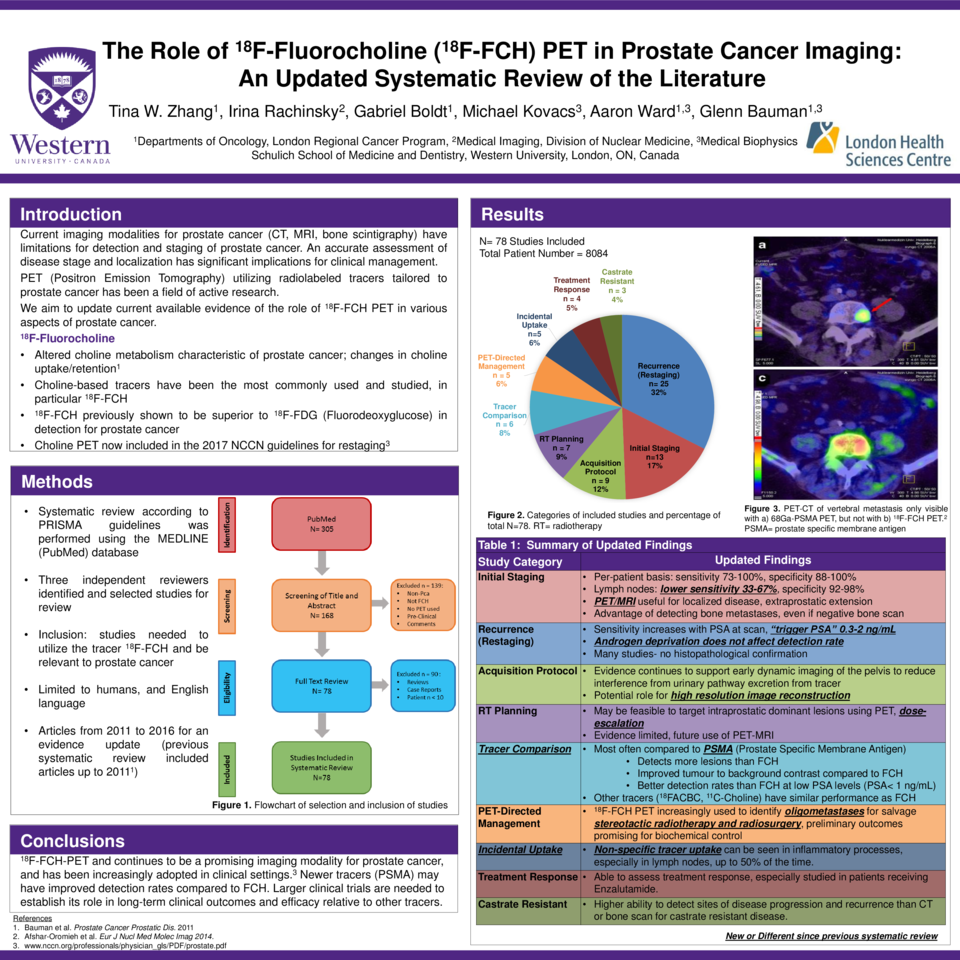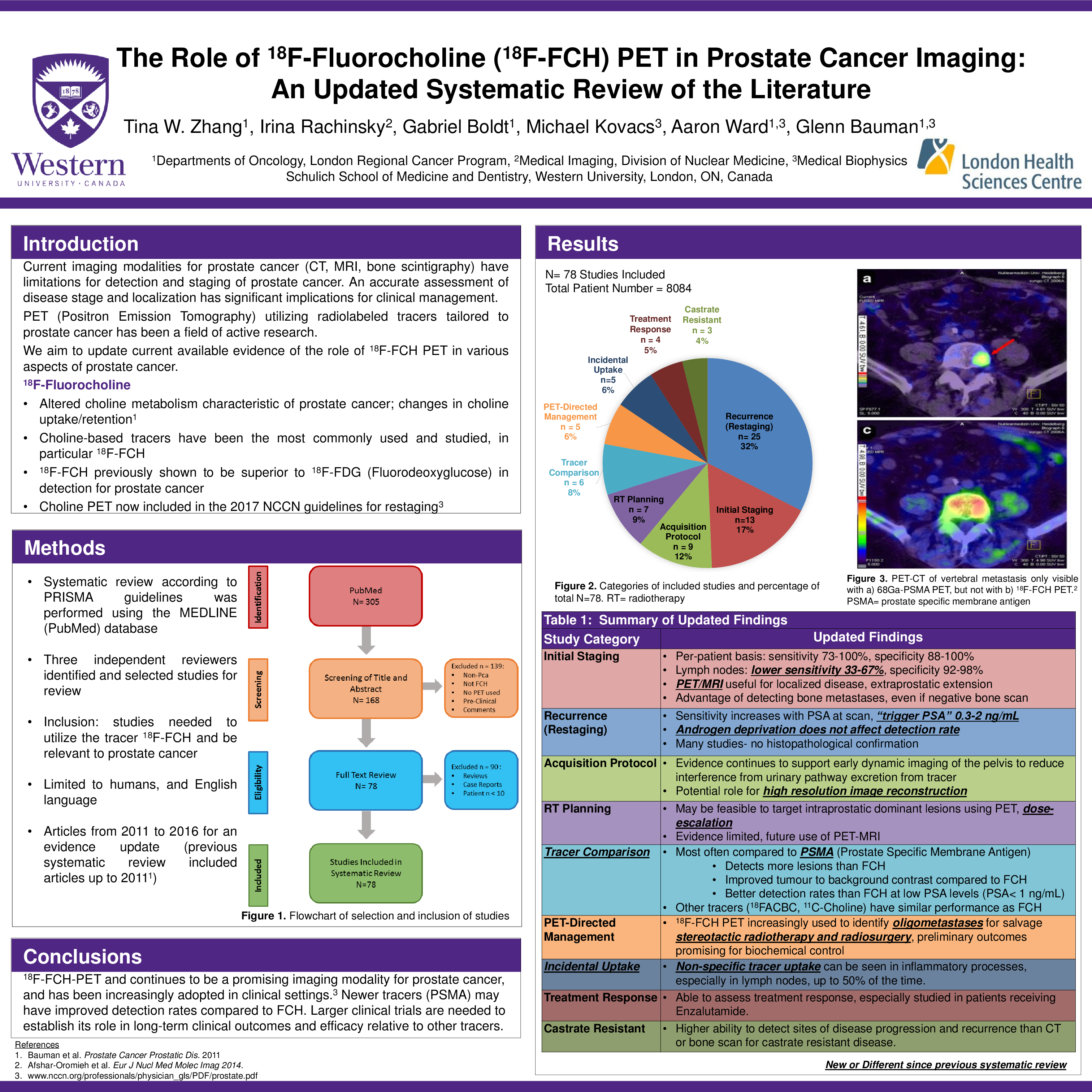Abstract
Introduction
Current imaging modalities such as CT, MRI, and bone scintigraphy have limitations for detection and staging of prostate cancer. An accurate assessment of disease stage and localization has significant implications for clinical management. Positron Emission Tomography (PET) using radiolabeled tracers tailored to prostate cancer has been a field of active research. One of the most commonly studied tracers, 18F-Fluorocholine (18F-FCH), has previously shown superiority to 18F-Fluorodeoxyglucose (18F-FDG). Through this systematic review, we aim to update the current available evidence of the role of 18F-FCH PET in various aspects of prostate cancer.
Methods
A systematic review according to PRISMA guidelines was performed of English language studies using the MEDLINE (PubMed) database. For inclusion, studies needed to utilize the tracer 18F-FCH and be relevant to prostate cancer. As our previous systematic review1 included articles up to 2011, article search was limited from 2011 to 2016 for an evidence update.
Results
The initial search strategy identified 305 potential studies and 78 studies met the inclusion criteria for full text review, including a total of 8084 patients. Studies were categorized into those investigating 18F-FCH PET for restaging of recurrent disease (n= 25), initial staging (n= 13), acquisition protocol (n= 9), radiation planning (n= 7), comparison with other tracers (n= 6), PET-directed management (n= 5), incidental uptake (n= 5), response to treatment (n= 5), and castrate resistant disease (n= 3). Trends in the literature review included significant evidence to support use in restaging and evidence that detection rate is highly correlated to PSA at the time of imaging. For initial staging, 18F-FCH PET/MRI was better at detecting intraprostatic lesions and extraprostatic extension compared to PET/CT. There has been increased research in using PET localization to guide management, such as stereotactic radiotherapy for oligometastatic disease. Further studies have compared other PET tracers to 18F-FCH, and those directed towards prostate-specific membrane antigen (PSMA) seem to have improved detection compared to 18F-FCH.
Conclusion
18F-FCH PET has been employed with increasing frequency for staging and restaging prostate cancer. Newer PET based agents like those directed against PSMA are increasingly being investigated and appear to carry improved performance compared to 18F-FCH.
- Prostate Cancer Prostatic Dis. 2012; 15(1):45-55.





